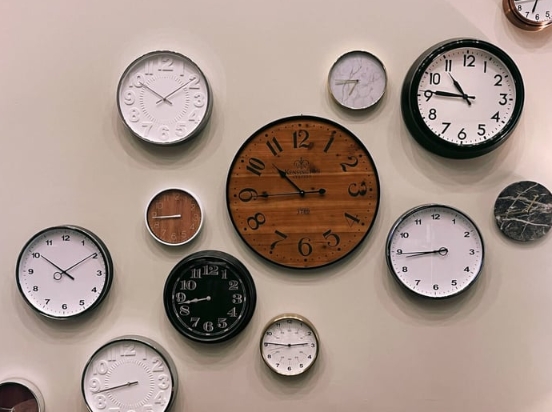
Once upon a time, a wall clock was simply a practical tool — a household necessity to help families organize their day. Today, it has evolved into something far greater: a statement piece of design, a reflection of lifestyle, and a symbol of personal taste. The journey of the wall clock mirrors the evolution of design itself — from pure function to a blend of art, innovation, and emotion.
The earliest wall clocks were born out of necessity. During the 17th and 18th centuries, pendulum clocks dominated European homes. These were prized for their accuracy and craftsmanship, often handcrafted from wood and brass with ornate details. The clock was a symbol of order and prestige — a proud fixture in family living rooms and studies.
With industrialization in the 19th century, clock production became more efficient and accessible. Factories in the United States and Europe began producing affordable wall clocks for the middle class. Designs became simpler, focusing on reliability and affordability rather than decoration.
The 20th century brought a major shift. As design movements like Art Deco, Bauhaus, and Mid-Century Modern emerged, the wall clock transformed from a tool into an object of style. Clean lines, geometric forms, and bold materials replaced intricate carvings.
In the post-war era, designers began treating the wall clock as a form of artistic expression. Colorful plastics, metals, and unique shapes became popular in the 1950s and 1960s. Brands experimented with sunburst designs, atomic motifs, and minimalist dials — blending modernity with optimism. The wall clock had officially entered the realm of interior design.
The invention of quartz movement in the 20th century revolutionized timekeeping. It replaced mechanical gears with crystal oscillation, delivering near-perfect accuracy while allowing clocks to become thinner, quieter, and more diverse in style.
As digital technology developed, new forms of wall clocks emerged — from LED displays to hybrid analog-digital designs. What was once a purely mechanical object became a symbol of progress and innovation.
Today, the modern wall clock is as much about aesthetics as accuracy. Designers and homeowners choose clocks not only to tell time but to define a space. A sleek metal clock may highlight a minimalist office; a wooden frame clock adds warmth to a living room; and a creative acrylic design becomes a conversation piece in cafés or art studios.
At Tongyuan Clocks, we celebrate this evolution by combining craftsmanship with creativity. Our collections feature wood, metal, acrylic, and marble-inspired designs, offering both traditional elegance and modern flair. Whether it’s a silent quartz clock for peaceful living or a statement piece for contemporary interiors, each model reflects our commitment to both design and precision.
The evolution of modern wall clocks shows how deeply design and culture intertwine. From pendulums and gears to digital precision and minimalist art, the clock continues to evolve — yet its essence remains the same. It connects us to time, rhythm, and beauty in everyday life.
Far from being a relic of the past, the wall clock stands today as a timeless expression of taste and innovation.
To explore how modern craftsmanship meets artistic design, visit www.tongyuanclock.com